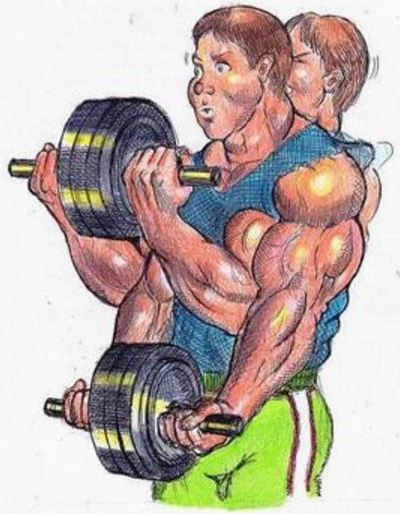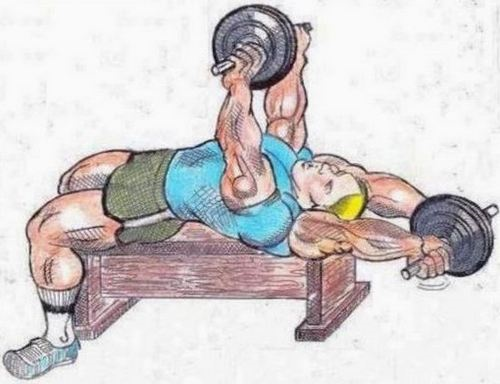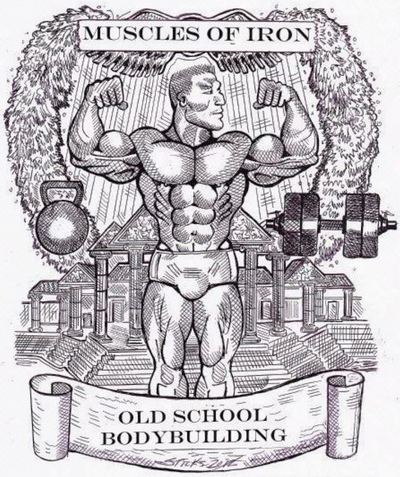Main Feature
The swingbell is essentially an extended dumbbell handle with the plates centered for two-hand capabilities. The curl, seated or standing, the straight-arm pullover, and the wrist curl lend themselves to excellent variations with the swingbell. Traditional two-arm swing movements require a shorter plate rod to clear the inside of the legs.
Static bodybuilding movements are better served by a 16 to 18-inch bar. For standard plates, I recommend using a one-inch diameter solid steel rod. For Olympic plates, a 1 1⁄2-inch diameter schedule 40 galvanized pipe works well.

The whole biceps and forearm assembly responds quickly to swingbell training in a way that converts over wonderfully to strongman and team sports. Simply insert them into your weekly routine in place of regular curling movements.
I think that most people will find the swingbell curl so productive they will dedicate a catch of weight plates for this exercise in their home gym. This movement is elemental home-gym training, and you typically won't find a swingbell in a standard health club. This is all the more reason to have your own space and be your own trainer.
Bonus - The Swingbell Pullover
Another great home gym movement is the pullover performed with a swingbell. This exercise provides enormous benefits to the entire body—rib box, lats, long head of the triceps, abs—you name it. Inhale deeply while lowering the weight and exhale while raising the bell. Keep the elbows locked and the arms straight, and you got it!

You can work in the pullover after training your chest, back, or legs. For this exercise, a couple of sets of 8-12 reps should be optimum. For a cool variation, bang out 10 quick close-grip benches after your last pullover rep.

Add Comment